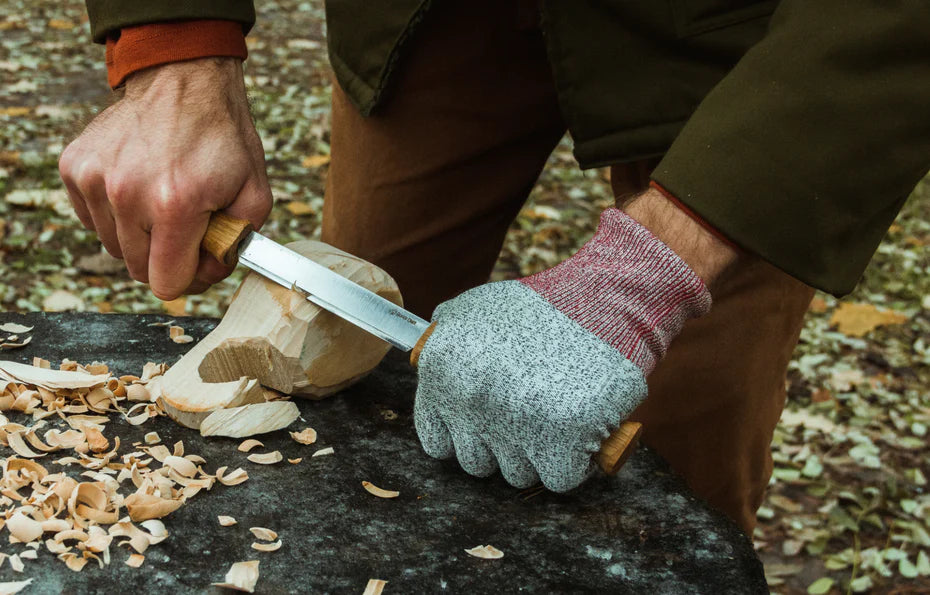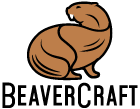Draw knife: types, tips for use, interesting models

It’s impossible to describe in a nutshell what a draw knife is. There are many varieties of this two-handed carpentry tool, and each of them deserves a separate description. Initially, such a knife was intended for removing bark from tree trunks, over time, other functions became available to carpenters. Modern models are able to cut workpieces quickly, handle convex and concave surfaces carefully, and make gouges.
What is a draw knife
The classic woodworking draw knife consists of a long, straight blade that tapers off at the edges. Wooden or plastic handles are put on its ends (the first option is more preferable). The handles are angled to the blade or are connected straight. Thanks to this design, you can cut wood quickly and work on uneven surfaces. Some models are equipped with mechanisms for controlling the adjustment and cutting depth.

If a draw shave knife has an inwardly curved blade, it is convenient to use for fine wood cutting. Working with a razor requires extreme care and accuracy. Too much vigor can lead to injury. However, this applies to any carpentry tool.
The kinds of a draw knife
When it comes to woodworking, having the right tools is essential to achieving the desired results. One tool that is commonly used in woodworking is the draw knife. A draw knife is a versatile cutting tool that can be used for shaping and removing material from wood, and it comes in a variety of shapes and sizes. In this article, we will explore the different types of draw knives and their specific uses, so you can choose the right one for your woodworking project. Whether you're a beginner or a seasoned woodworker, understanding the different types of draw knives will help you achieve the best results.
Examples of some popular two-handed knives for woodworking.
American draw knife
It features a flat blade pointed at a carver. Length – from 20 to 35 cm. The handles are bent to the blade at 85-90 degrees. There is a model with foldable handles. The blade of such a knife has a groove and a triangular profile. The tool is suitable both for planning logs and for various carpentry tasks.
London draw knife
A flat straight or slightly curved blade with a length from 20 to 45 cm. The profile is rectangular with a bevel up to 30 degrees. In its classic design, the handles are at right angles to the blade. This drawknife can be used for chamfering and rounding parts. Models of London type are very similar to the German ones, only the latter have a triangular blade.
French draw knife
This knife’s feature is the shape of its handles – it resembles an egg or mushroom. The blade is flat, straight, or slightly concave, with a rectangular profile, 10 to 25 cm long. The handles are often raised above the blade, positioned at an angle of 90 degrees to it.

Barrel draw knife
This knife is designed for cutting deep grooves. A convex blade 15–20 cm long is usually sharpened from the outside. An alternative to such a tool is the one-handed Hook Knife, which is convenient for cutting grooves.
Swedish draw knife
The most common model today, widely recognized for its versatility. A short, straight blade, ending in parallel handles – it is comfortable for both pulling and pushing.
How to use a draw knife
Everyone starts somewhere, so here are some tips for beginners.
- Before you’ll know how to draw knife is used for the main tasks, you should have a lot of practice. Always work with two hands, the grip is firm, but not too hard. For better control, it is recommended to place your thumbs on the blades while holding the handles with other fingers.
- A wooden workpiece must be securely fixed with a clamping device. It is important that cutting along the grain is comfortable. Your legs’ position should be as stable as possible.
- First, you can make a few test cuts by pulling the blade towards you. If it is well sharpened, the curl should detach from the wood without much effort. Both short and long movements are worth trying. Likewise, practice cutting from the bottom up.
- When removing sticky wood, you will need to apply more force and control the depth of a cut. To begin with, it is recommended to make a series of short jerks towards yourself. You can’t cut the wood too deep with such movements, so do not worry that a large draw knife will get stuck. By sliding the blade from side to side, holding it at an angle, you can quickly remove large amounts of wood in complete control.
- To create a groove on a concave surface, the bevel must be facing downward. In this case, slightly lift the handles to shake out the wood chips. You should work to the bottom, so as not to cut off too much in places where the texture changes. On a convex surface, it is better to start from the top point. You can cut both down and up.
Each master has his or her own way of working with such a knife. The only way to improve your skills is to practice as much as possible, keeping in mind the basic safety rules. You can store the knife on any wooden surface. Some models have a hole on the handle so you can hang the tool, which is even better. Draw shave tool from BeaverCraft comes with a leather case so you don’t have to worry about storing it.
How to sharpen a drawknife
How to draw knives and keep them sharp? They often have long blades, so the classic sharpening on a grinding wheel is difficult. It is safer to use a flat whetstone (natural, ceramic, diamond). At the same time, it is better to hold the tool vertically, resting one handle on a stable surface. It is more efficient to sharpen the knife with long strokes.
For fine milling, you’ll need a special file. With it, you can give a bevel almost perfect shape. The process is quite long and painstaking, but your efforts should be rewarded with a worthy result. Some enthusiasts go even further by making a slight bevel on the back of a blade. This provides additional agility and improves control.
Sharpening curved draw blades is even more challenging. It is almost impossible to fix a rounded or curved profile on a grinding wheel, it is difficult even with a straight edge. It’s better to buy a new tool or address a professional. If you definitely want to do it yourself, a honing block is recommended for curved blades, and a flat one for straight blades.
When you buy a knife from the BeaverCraft store, you get a perfectly sharpened product, but over time it will still need to be sharpened. If you have no experience in this, it is wiser to ask an expert for help. But you can still try to cope with your own efforts.
Where can I buy a draw knife?
You can buy a straight draw knife and other woodworking tools from the BeaverCraft online store. The site has been operating since 2014, shipping time in the United States is from 11 to 45 days. We offer you to look through an overview of some popular models.
DK1S – Drawknife with Oak Handle in Leather Sheath
Another practical wood

All-purpose knife for fine cutting. With its help, you can plan faceted parts, round off workpieces and give them various shapes. Main characteristics:
- blade length – 4.72 ”;
- blade thickness – 0.12 ”;
- the total length of handles – 9.44 “;
- weight – 150 g;
- materials – steel, oak, genuine leather.
This fairly large drawknife is highly durable. A high-carbon steel blade is well hardened and perfectly sharpened. A leather sheath is provided to protect the blade from external influences and a user from accidental cuts. The elegant case fits well with the overall design of the product.
Each handle is 12 cm long – more than enough for a comfortable palm grip. The handles are made of natural oak, the surface is coated with linseed oil. The knife has received many positive reviews from the professionals working with wood.
DK2S – Drawknife in Leather Sheath
Another practical wood draw knife designed for delicate chip removal. With its help, you can give almost any shape to a workpiece. The product weighs only 150 g and is highly durable. Basic parameters:
- blade length – 4.72 ”;
- blade thickness – 0.12 ”;
- the total length of handles – 8.26 “;
- weight – 150 g;
- materials – steel, ash, genuine leather.
The tool is intended for fine finishing work and is not recommended for cutting. Thanks to excellent sharpening, its stainless steel blade perfectly processes even tough wood. This relatively small knife drawing comes with an elegant leather sheath that safely protects the blade from moisture, sunlight, and other external influences. A user can safely store it in the same place with other items without fearing of cutting himself when picking the tool. Handles are made of ash, covered with linseed oil. They are securely fixed in palms without any discomfort.
About BeaverCraft
We offer high quality woodworking tools, as well as blanks and accessories to make life easier for craftsmen. Our principle is high quality at an affordable price. All products are manufactured in Ukraine in full compliance with European standards. The main sections of the BeaverCraft online store are:
- knives for carving wood and making spoons;
- tool kits;
- wood blanks;
- chisels;
- blades;
- tools for working with green wood;
- tools for finishing small pieces;
- accessories.
We hope you have received the answer to the question: where can I buy a draw knife? And now you can go to the BeaverCraft website and start browsing the store’s offers. Our managers are always ready to give recommendations and advice if necessary.
FAQ about draw knife
What are the different types of draw knives?
There are several types of draw knives, including straight draw knives, curved draw knives, and spokeshave draw knives. Each type has its own unique features and is suited to different woodworking tasks.
What should I look for in a draw knife?
When choosing a draw knife, you should look for one that is well-balanced, with a comfortable grip and a sharp blade. The blade should also be of good quality steel and have a bevel angle that suits your needs.
How do I use a draw knife?
To use a draw knife, you should first secure the piece of wood you want to work on in a vise or clamp. Then, grasp the draw knife with both hands and use it to shave off thin layers of wood from the surface of the piece, using a pulling motion towards you. It's important to maintain control of the draw knife and take small, gradual cuts to avoid removing too much material at once.
What are some tips for using a draw knife safely?
When using a draw knife, it's important to wear appropriate safety gear, including eye protection and gloves. Always cut away from your body and keep your fingers clear of the blade. It's also a good idea to use a stop block or jig to ensure consistent cuts, and to keep the blade sharp to avoid slipping and injuring yourself.
Author:

Roman Law
Wood carving guruFrom a childhood enchanted by nature, my passion for wood carving guided me on a path of creativity. With a pocket knife, I uncovered the transformative power of my hands, breathing life into driftwood and forging a lifelong connection with the medium.

